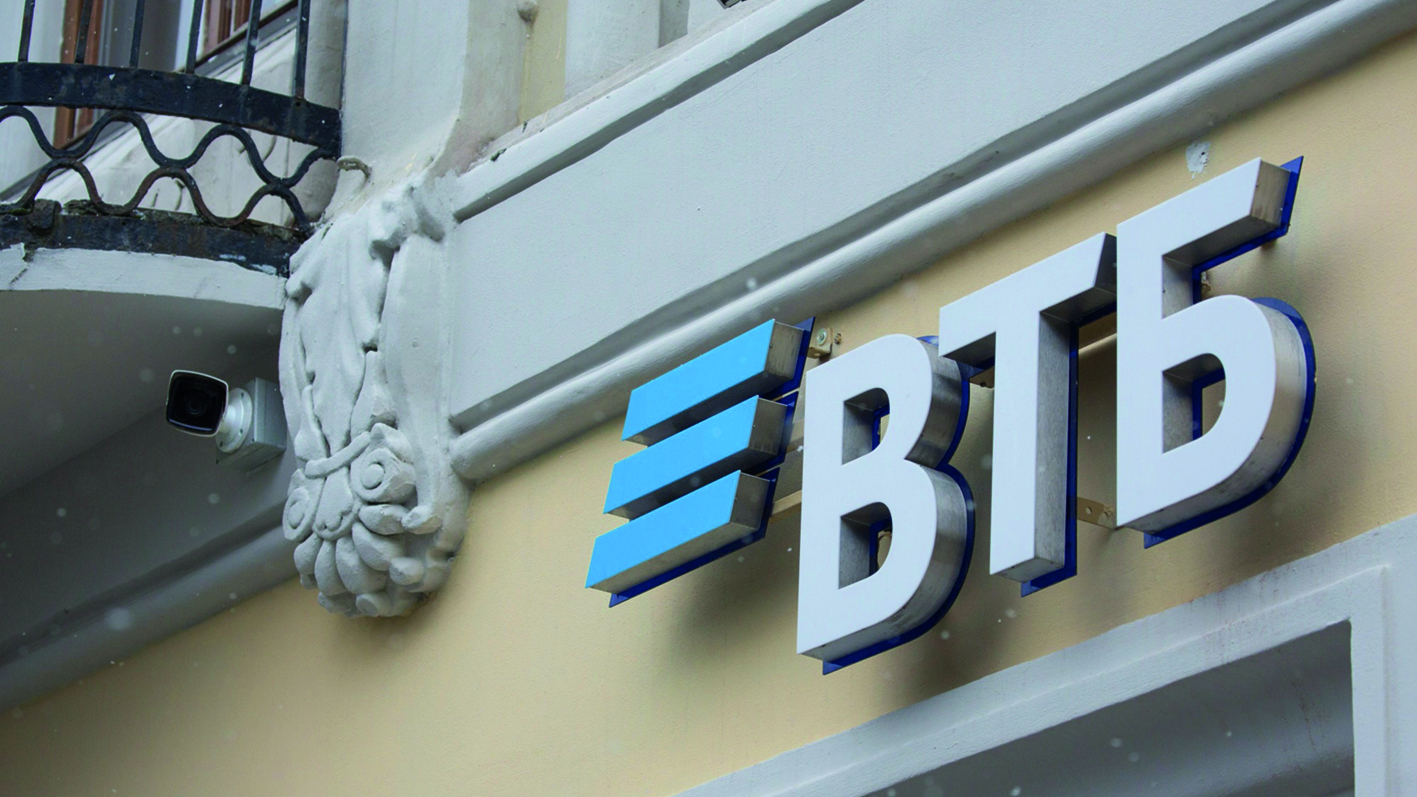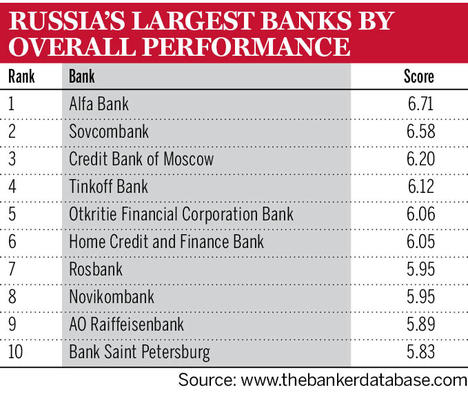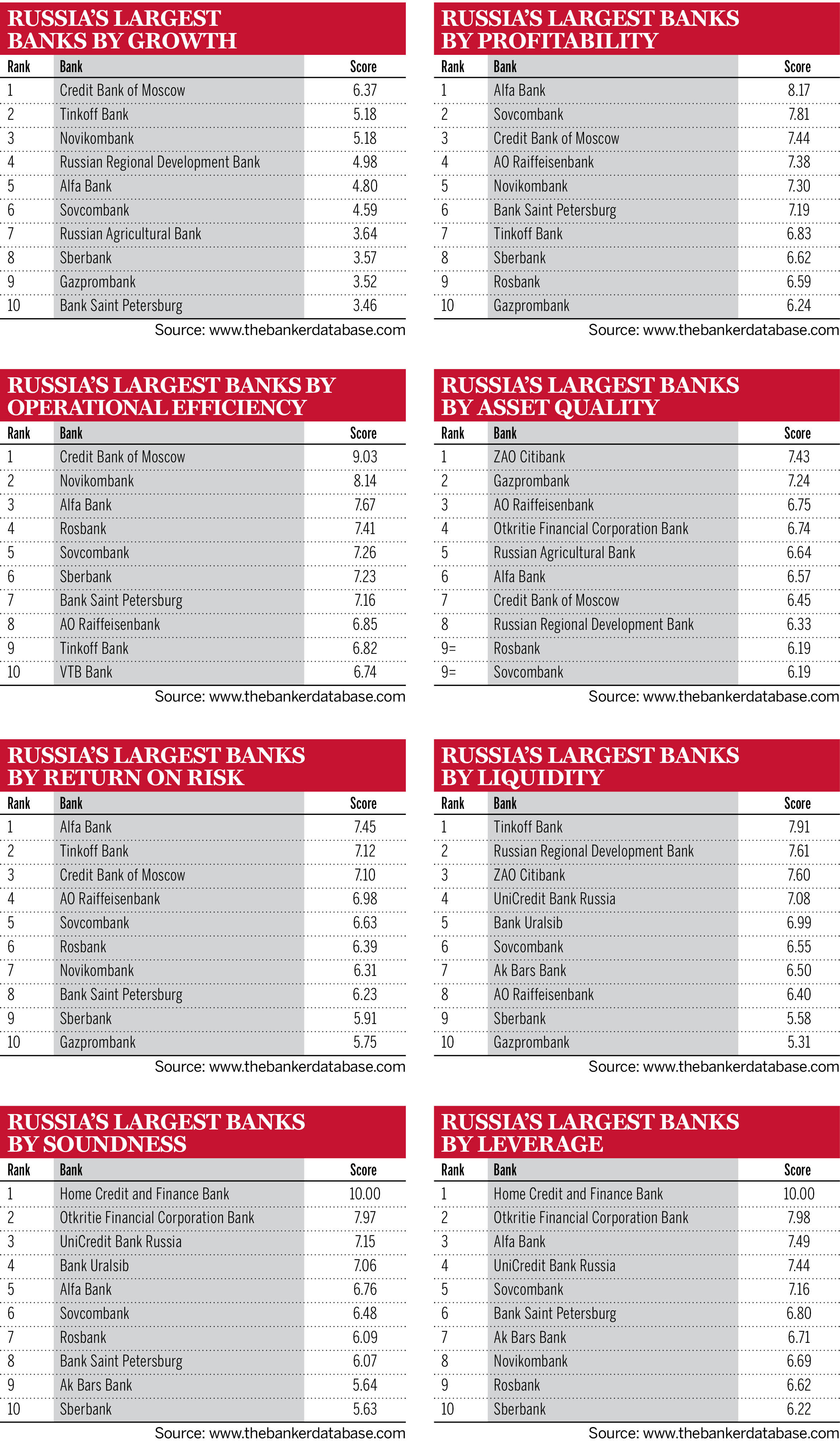
Despite the country’s mild economic recession in 2020, Russia’s banking sector remained resilient during the worst of the Covid-19 pandemic.
The Russian economy and banking sector managed to weather the Covid-19 storm in relatively good shape. The country experienced a modest drop in gross domestic product of 3% in 2020, compared to contractions of 3.8% in the world economy and 5.4% in advanced economies, according to the World Bank’s May 2021 Russia Economic Report.
Apurva Sanghi, lead economist for the World Bank in Russia, attributed the country’s performance to significant macro-fiscal stabilisation efforts, resulting in an improved fiscal position. “Among other contributing factors were enhanced regulation and supervision in the banking sector, [and] fortified capital and liquidity buffers,” he added.
In The Banker’s Top 50 Russian Banks ranking by Tier 1 capital, which is based on end-2020 results, Sberbank remains miles ahead of its peers, with a Tier 1 capital position of $65.9bn — a 6.8% drop from the previous year. VTB Bank and Gazprombank maintain their second and third places from 2021’s ranking, with $21.5bn and $9.9bn in Tier 1 capital, down by 14.5% and 10.7%, respectively.
All three banks saw a decline in Tier 1 capital in 2020, in contrast to the double-digit growth in their positions during 2019. Only 11 of the top 50 banks saw an increase in Tier 1 capital, with UBRD Bank reporting the biggest rise in percentage terms (62%), to $159m. Absolut Bank reported the biggest contraction in Tier 1 capital in percentage terms, with a decrease of 47.6% to $126m; it tumbled from 38th position to the bottom of the ranking.
A similar trend can be seen with total assets, with only 15 banks reporting an increase. Bank DOM.RF saw the biggest gains in percentage terms, growing by 45.8% to $6.7m; Surgutneftegasbank, on the other hand, recorded the biggest decrease in assets, falling by 66.5%.
We have also applied our best-performing methodology to the 20 largest Russian banks by Tier 1 capital, including foreign-owned subsidiaries (FOSs). The overall best-performing ranking has seen a reshuffle at the top. Alfa Bank, Russia’s largest privately owned lender, has surged into first place from outside last year’s top 10, with a score of 6.71. Factors contributing to its leading position include Alfa Bank’s outstanding performance in terms of its profitability and return on risk, where it is ranked first among its peers, while the bank is also ranked in the top five for growth, operational efficiency, soundness and leverage.
Sovcombank and Credit Bank of Moscow round off the top three in the overall best-performing Russian banks ranking with scores of 6.58 and 6.20, respectively. Tinkoff Bank, which topped the 2021 overall table after emerging as the country’s leading online bank, sits in fourth place this year with a score of 6.12.
The top three for profitability mirrors the ranking for the overall top three best-performing Russian banks. One notable move is Bank Uralsib, which topped the profitability ranking last year, but now sits at the bottom in 20th position with a score of just 2.9. Bank Uralsib is also ranked last among the cohort for operational efficiency and return on risk, as well as scoring poorly for growth and asset quality. These rankings have contributed to the bank’s position of 19th in the overall best-performing table — a big decline from 2021 when it was ranked third.
There has also been significant change at the top of the all-important asset quality table. FOS ZAO Citibank has jumped from third to first place, scoring 7.43, with Gazprombank and AO Raiffeisenbank in second and third position scoring 7.24 and 6.75, respectively. Otkritie Finance Corporation Bank, which came first last year, narrowly misses out on the top three with a score of 6.74.
The Banker’s Top 50 Russian Banks ranking displays a banking sector in robust shape, a trend that is likely to continue. According to Fitch Ratings’ Russian Banks Datawatch, in the first six months of 2021, Russian banks almost doubled their profits to Rbs1.2tn ($16.5bn) from Rbs630bn during the same period in 2020. Retail lending growth was particularly impressive for Russia’s banks in the first half of 2021, increasing by 12.8% on the same period in 2020, due to a recovery in demand, low interest rates and some relaxed underwriting standards.
As well as low interest rates, corporate and household demand for banking services during the pandemic has been stimulated by generous state support. A state-subsidised programme has helped drive a surge in demand for mortgages.




